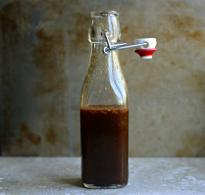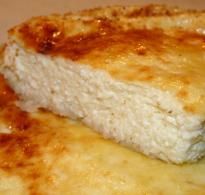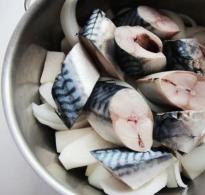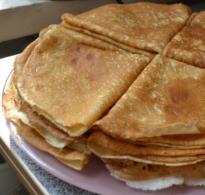Painted eggs for Easter. When to paint eggs on Holy Week
To answer the question of when to paint eggs for Easter 2018, you should remember great post. We know that before Easter comes the longest and strictest fast in the Christian year. The last week of fasting, which is generally considered the most strict, is called "Passion" or "Great Week". During this period, they remember the events that happened to the Savior in Jerusalem right before the crucifixion.
During these six days until Easter Sunday, there are days when you can and even need to dye eggs, as well as days when you should refrain from dyeing eggs, like any other household work. Great .
When to paint eggs on Holy Week
It is determined when to paint eggs for Easter 2018 - this must be done on certain days of Holy Week, which is the last week of Lent. In 2018, Orthodox believers celebrate Easter on April 8, which means that the Great Week begins on April 2 and ends on April 8, in fact, with the onset of Easter.
Our ancestors began preparing for Easter already on Maundy Monday. Then the housewives put the dough on Easter cakes, began to make cottage cheese Easter and, of course, paint eggs. If you think that it is too early to do this on Monday, then you can transfer the coloring to Tuesday, Wednesday, Thursday or Saturday. But on Good Friday you can’t paint eggs and in general, you need to stop all preparations for Easter and retire, go to church services, remember the passions of Christ.

Important! Good Friday is the day when Jesus Christ was crucified on the cross, and then taken down from the cross and buried. This is the most mournful day, if you look at the entire church calendar. If possible, any work should be abandoned during this period, but all work in the house and in the kitchen for the period of Good Friday should definitely be stopped.
Then, on Holy Saturday, which will be April 7 this year, eggs can also be dyed. It is advisable to have time to complete everything in the morning in order to find time to go to church and bless the food. Despite the fact that many go ahead on Holy Saturday to bless food at churches, this can be done during the evening service on that day.
So, let's sum up once again the important totals when to paint eggs for Easter 2018. This is done on Holy Week, it falls this year for the period from April 2 to April 7. You can paint eggs on any day except April 6, which falls on Good Friday.
Advice! In addition to the fact that it is customary to paint eggs, they are also consecrated. According to church tradition, consecration is held after the liturgy on Holy Saturday. Although, today it can be done throughout Saturday morning. Recall that April 7 will be Great Saturday for Orthodox believers in 2018.

How to paint Easter eggs
Probably, each family will have its own answer to this question. Traditionally, if we consider folk methods of staining, then onion peel was used. Depending on how much onion peel is taken initially, the saturation of the egg color itself also depends.
In order to diversify the color of eggs in this way, you can use various leaves and figures cut out of paper. How exactly to make drawings on eggs will be discussed in this material, in its final part.
Interesting! Eggs are considered a symbol of the Holy Sepulcher in Christianity, they symbolize the eternal life of man. In Palestine and Israel, it was customary in the caves where the deceased was buried to lay the door with a stone. Tradition says that the stone with which they closed the cave with the buried body of Jesus Christ was shaped like an egg.
The emergence of the tradition of dyeing eggs
Having dealt with the topic of when to paint eggs for Easter 2018, I want to dwell on the question of why this is done. Of course, this is about tradition. But a true believing Christian must not only know what to do on a particular holiday, but why it is done, because of which such a tradition has been established.

If we talk about colored eggs, then we have to go back to the tenth century. At least, the tradition of dyeing eggs is mentioned precisely in the writings that date back to this date. The manuscript, found in the library of one of the Greek monasteries, says that on Easter after the service, the abbot distributed the consecrated painted eggs to the brethren with the words "Christ is Risen."
As for the tradition of dyeing Easter eggs, there is no one version here, but there are several legends at once. One is connected with Mary Magdalene. She went to Rome to preach about Christ. When she, with her sermon, got into an audience with the emperor Tiberius, she presented him with gifts in honor of Easter. The emperor said that a dead person cannot be resurrected, as white egg cannot turn red. At the same moment, the eggs in the hands of the emperor changed their color to a red hue.
In the books of Pliny the Elder one can find a description of how in Rome colored eggs used during games, in temple ceremonies and rituals. Some sources claim that the custom of dyeing eggs, in general, appeared in pre-Christian times. Then the egg was a symbol of life-giving power and the whole universe, ancient people believed, came out of the egg.
How were eggs dyed in ancient times?
On the territory of Rus', Easter has always been considered an important and solemn event. So, even in the absence of artificial dyes and stickers, our ancestors knew many ways how to decorate Easter eggs. Among natural dyes, in addition to the onion peel, which has already been mentioned, also use beets, sorrel, carrots.
Colored eggs were called "krashenki", but painted eggs were called "pisanki". The second version of the eggs could only be raw, so they were not suitable for eating, but they were always an excellent decoration for the holiday after Lent and.

Advice for quality coloring:
- Before coloring, it is recommended to remove the eggs from the refrigerator and let them rest for a couple of hours at room temperature. This will help ensure that the eggs do not burst during the cooking, which is necessary for dyeing.
- It is definitely recommended to wash each egg with soap: this will ensure an even distribution of the paint.
- For cooking, eggs are dipped only in cold water, then on strong fire bring to a boil, and then turn the heat to medium.
- If you add a few tablespoons of salt to the boiling water, the eggs will not burst.
- First you need to put in the pan what is used for coloring (husks, berries, etc.), and then put the eggs in the water.
- The more coloring material used, the richer the color will be.
- If you increase the cooking time, then the eggs will also be more saturated in the end.
As for the ornaments on the eggs, they can be made different ways. We want to emphasize within the framework of this material that in Rus' each type of ornament had its own symbol. For example, vegetation was just a symbol of spring and health, berries are a symbol of motherhood. Crosses are considered symbols of the universe, and geometric patterns on Easter eggs they just bring good luck.

Knowing for Easter 2018 how to do it and what dyes to use, you can create in your own holiday basket an extravaganza of colors and joy. We remind you that on Holy Saturday you can also paint eggs, but leave time for going to the temple to bless the food in the Easter basket.
The tradition of giving each other eggs at Easter carries a deep symbolic meaning. According to legend, the stone used to close the tomb of Jesus Christ had the shape of an egg. For Christians, the Easter egg is a reminder of the Resurrection of Jesus Christ, and the red color in which eggs are most often painted symbolizes suffering.
When to paint Easter eggs
Waiting until the last moment is a bad idea. In accordance with church traditions, eggs should be painted on the eve of Easter, on Maundy Thursday. Easter is celebrated in 2017 April 16, and Pure Thursday will fall on the 13th. However, Monday, Tuesday and Wednesday of Holy Week (the final 6 days of fasting) are also suitable. The main thing is not on Good Friday and not on Good Saturday.
How to paint eggs for Easter
Because of chemical properties For some dyes, we have divided popular dyeing methods into two groups: for eggs that can be eaten after dyeing, and for eggs that will be used only as a decorative element.
For food
Decorate and serve.
1. onion peel
The easiest way to color eggs, known to many since childhood. Boil first a large number of onion peel in water and let the broth brew, and only then boil the eggs in it. This will make the color more vibrant.
2. Prints of plants
An improved method of cooking in onion skins, for which you will need leaves and twigs of plants. Even ordinary parsley and dill look beautiful. To keep them from crumbling, soak them in cool water. Attach a sheet to a raw egg and secure with nylon (old nylon tights will do), tie with a thread so that it does not slip. Boil in onion broth.

3. Lace eggs
Even easier - wrap the egg in a piece of textured lace before boiling, stretch the fabric and tie it with a thread.

You will need napkins with beautiful patterns. Instead of glue that is not edible, use egg white. Cut out a pattern from a napkin, attach to the surface, coat with protein with a brush.

5. Marble eggs
Add a tablespoon to the dye diluted according to the instructions. vegetable oil and the same amount of vinegar, stir. Place the boiled eggs in the solution white color. The eggs will color unevenly due to the oil. It is enough to withstand about 4 minutes. To get more complex drawings, make the solution more concentrated or increase the time to 10-15 minutes.

6. Tiffany style
Before you dip boiled eggs into the dye, paste round stickers. They should be foil or plastic, paper ones can get wet. If you can't find one, use double sided tape. And to get a fashionable shade, mix blue and green dyes. Stand the egg for one to two minutes.

7. Ombre effect
To create the effect of a smooth color transition, put the egg in a ladle and dip almost completely into the coloring solution. Then gradually lift the egg up so that it stains from a light shade to a dark one. The transition will turn out smoother if you constantly slightly raise and lower the egg. The whole procedure will take about 3-5 minutes.

Not for food
Some creative ways the dyes are not suitable for the eggs you plan to eat. It's all about the harmful substances that are contained in certain dyes and are not intended for human consumption. Take precautions.
1. Golden eggs
Artistic gold leaf, similar to gold foil, is used in many decorative works. You can buy it in art stores. This pattern looks beautiful on both white and pre-dyed eggs. You can also completely cover the eggs with sweat.

2. Space eggs
Pour water into container room temperature, wear gloves. Pour nail polish blue or purple, several colors available. Stir with a stick to create a marbled effect. Immerse the egg in the solution, rotate. Remove with tongs, dry.

3. Doodling eggs
Spectacular doodling patterns can be applied with a regular permanent marker or felt-tip pen.

4. Smiley eggs
Yellow food coloring plus markers. Very simple and fun.

5. Easter Bunny
Rabbit ears are cut out of paper, fastened with glue. We make a flower crown from stems with flowers, we tie the ends with a thread.

6. Silk dyeing
You will need a silk fabric or, for example, an old silk tie with a beautiful pattern. We take raw eggs white (so the picture will turn out brighter). Cut the fabric into small pieces, wrap each egg, fasten with threads. Boil in water with the addition of vinegar.

7. For designers
Surprise your designer friend with Pantone-inspired Easter eggs. The most fashionable color of 2018 according to Pantone is Ultra Violet, number 18-3838.

8. Mother of Dragons
Game of Thrones fans will surely love this decor option. To make scales, you will need decorative sequins or colored confetti. They need to be glued to the surface of the egg in a checkerboard pattern and coated with spray paint. The paint with the effect of "metallic" looks beautiful.
In 2017 main holiday Orthodox believers Easter falls on April 16th. One of the traditions of this great holiday is the coloring of eggs.
Moreover, not only believers paint eggs. For many, this is an interesting custom that allows the whole family to join in coloring eggs in bright colors and painting them with fancy ornaments.
When to paint eggs for Easter 2017
By tradition, the coloring of eggs takes place on one of the days of Holy Week. Orthodox tradition recommends dyeing eggs on Maundy Thursday. It is on this day that Easter cakes are baked, the house is cleaned before the holiday, and other preparations for Easter are made. However, according to church canons, egg coloring can also occur on Saturday, which is called Red in honor of this ritual.
Note that Orthodox people most often paint eggs red, which symbolizes the blood of the Savior.
When to paint eggs for Easter 2017: How to paint eggs: useful tips
To make the paint lay down evenly, before boiling the eggs, you need to wipe them with alcohol.
To prevent the eggs from bursting during cooking, it is better to add a few tablespoons of salt to the water.
And to make the eggs easier to peel, after they are cooked, they need to be dipped in cold water for a couple of minutes.
If there are children in the house, it is better to avoid chemical dyes, it is better to choose only natural ones - beetroot juice, onion peel, etc., as dyes can penetrate into the middle of the egg and enter the child's body.
If you want Easter eggs to shine after dyeing, then rub them with vegetable oil.
TOP 20 ways to paint eggs
Dyeing eggs with onion skins is the most famous and easiest way. To do this, you need to boil a fairly large amount of husk for 30 minutes, set aside and let the broth brew. Then put raw eggs there and boil until tender. If you want to make the color darker, then there should be more husks, lighter - less husks.
If you boil raw eggs with spinach or nettles, they will turn green, depending on the concentration of the herb. Although it all depends on the case, it may not turn out to be a very beautiful color.
Yellow eggs are obtained by boiling them in turmeric. Purple eggs - if you paint them in violets. To do this, you need to take violet flowers, pour them hot water, let the solution brew and soak the eggs in it overnight. If you add a little to the water lemon juice, you get a lavender color.
If cooked with shell walnut, the eggs will turn out light beige or brown.
Pink color can be obtained with cranberry juice. To do this, squeeze the juice, boil eggs in it and leave overnight.
Blue eggs or blue stains on them can be obtained by rubbing already boiled eggs with red cabbage leaves.
In order for the eggs to be beige or brown, you need to boil the eggs in ground coffee.
Drawings on Easter eggs
Spotted eggs are easy to make: roll a wet egg in rice, buckwheat or other cereals. Wrap it tightly in cheesecloth, tie it tightly and cook in any dye. The result can be a cute and unusual egg.
To get an abstract pattern on the eggs: wrap them in onion skins and wrap them in gauze, boil them in the skins or any dye. You will get an egg in divorces.
If you wrap an egg in parsley or dill leaves, put it in a stocking and boil it in onion skins, you will get an egg with a beautiful pattern.
If you put a few rubber bands on the egg and dye it in dye, you will get an egg in stripes.
White patterns on the krashanka can be applied using powdered sugar. To do this, take a glass of powdered sugar, add a little water to make the mixture very thick. Using a pastry syringe, we apply a pattern to boiled and colored eggs.
A real pysanka will turn out if you work a little with wax. We take an already boiled egg and a burning candle. With the help of a match, we draw a picture, reports w. Then we lower the egg into the paint, but not hot, otherwise the wax will melt. Then the unpainted places are painted, and thanks to the wax, a pattern remains on the egg. Then the wax is gently scratched or heated slightly on candles and erased.
Also, scratch eggs are obtained if any pattern is applied to the krashanka with a needle or other sharp object.
Along with cookies and cottage cheese Easter painted eggs, which are called krashenka and pysanky, have become an indispensable attribute of this holiday.
And when, on what day should you paint eggs for Easter in 2019? Products for holiday table consecrated in churches on Saturday from morning until late evening or early Sunday morning. Accordingly, colored eggs are prepared the day before.
What day should you paint eggs for Easter in 2019?
According to tradition, the dishes of the festive table begin to be prepared on Maundy Thursday, which falls on April 25 in 2019.
You can do this on Saturday, April 27, 2019. But it is better not to paint eggs on Good Friday, which is not only the most mournful day of Great Lent, but also the most mournful day in the Orthodox calendar.
When should you paint eggs for Easter? This can be done on Saturday morning, given that the temples begin to bless food from 10 o'clock.
Or later, as it is believed that it is better to bless the painted eggs, Easter cakes and Easter on the night from Saturday to Sunday after the church service, which begins at 20.00. At the end of the service, which ends with a procession, the food is consecrated.
Why are eggs painted for Easter?
Where did this custom come from? In many nations, the egg is considered a symbol of life and renewal. Among Christians, the first written mention of painted eggs was found in manuscripts of the tenth century, which are stored in the library of the monastery of St. Anastasia in Greece.
They say that on the day of the holiday, the monks read a prayer for the blessing of the eggs, and then the abbot gave them colored eggs with the words: “Christ is Risen.”
How did the tradition of painting eggs for Easter begin? There are several legends about it. According to one of them, the disciple of the Savior, Mary Magdalene, came to Emperor Tiberius with the joyful news that Christ had risen.
But he did not believe her, saying: “It is impossible, like that of white egg became red. But at the same moment, the egg that Mary brought turned red. The egg is also considered a symbol of the empty tomb of Jesus Christ.
Since ancient times, it has been customary to paint eggs in various colors, but red remains the main one - a symbol of the blood of Jesus, as well as a symbol life force and resurrection.
In the old days, after Easter, believers kept painted eggs as amulets that protected houses from fires, lightning strikes and other troubles.
Eggs are dyed on Maundy Thursday of Holy Week. Again, it is time to be surprised and ask yourself, which is why it is on Thursday that the eggs do not burst, they turn out to be even in color. But because it is on Maundy Thursday that they are supposed to be painted. This day is for dyes.
As if what power makes them beautiful and elegant, and the pattern, if you draw Easter eggs, turns out to be especially elegant. This has been verified by people over and over again. Only when they find out that it is on Thursday that eggs are supposed to be painted, they shrug their hands, they are surprised: “If only they knew, otherwise half of the eggs are obtained with a damaged shell.”
Now we know. Usually, onion skins are used for dyeing. Good hostess he never throws it away, gradually accumulates more, puts it in a bag. From the onion peel, the eggs turn out to be of an even dark red color, they are stored for a long time.
For dyeing eggs, they just didn’t store anything. Experimented. They collected the bark of trees, stored herbs and inflorescences from the summer. They shared recipes, in which color the shell was dyed with cherry or oak bark, usually they collected alder bark. Of course, they used beets. Depending on the saturation of the water, the color of the eggs was also obtained. And today, many housewives paint eggs the old fashioned way, and when they give them away, they share their secrets with pleasure. natural dyes. And this unique technology still remains, is passed on to each other, causing admiration.
Several eggs in the house were certainly painted with goose feathers. And today they try to draw a pattern on the egg, or with a brush, dipping it in homemade paints. Such eggs used to be called "pysanky", and were intended for decoration or a gift.
How to paint in onion broth?
Usually they take a voluminous pan, boil the onion peel in it. The more they put it, the richer solution, deeper color. The husk almost discolors, it gives color to the water in which it was boiled. Experienced housewives do not throw away this boiled husk, but put it in compost for garden beds. Onion peel disinfects the shell, makes, by the way, hard boiled eggs much tastier than boiled in ordinary water.
They also do this: they put a leaf of parsley or dill on the egg, wrap it around with a thread, put it in a nylon bag, and then into the onion broth. The egg is boiled, cooled in cold water, took out - gasped. It turns out unexpectedly interesting pattern. Here only skill is needed, if you try, you will do it. real gift for yourself and family. You can cut out a beautiful leaf, a flower from the film with scissors, and paint it in the same way so that you get a light drawing on a dark background, but, as they say, natural leaves are better.






